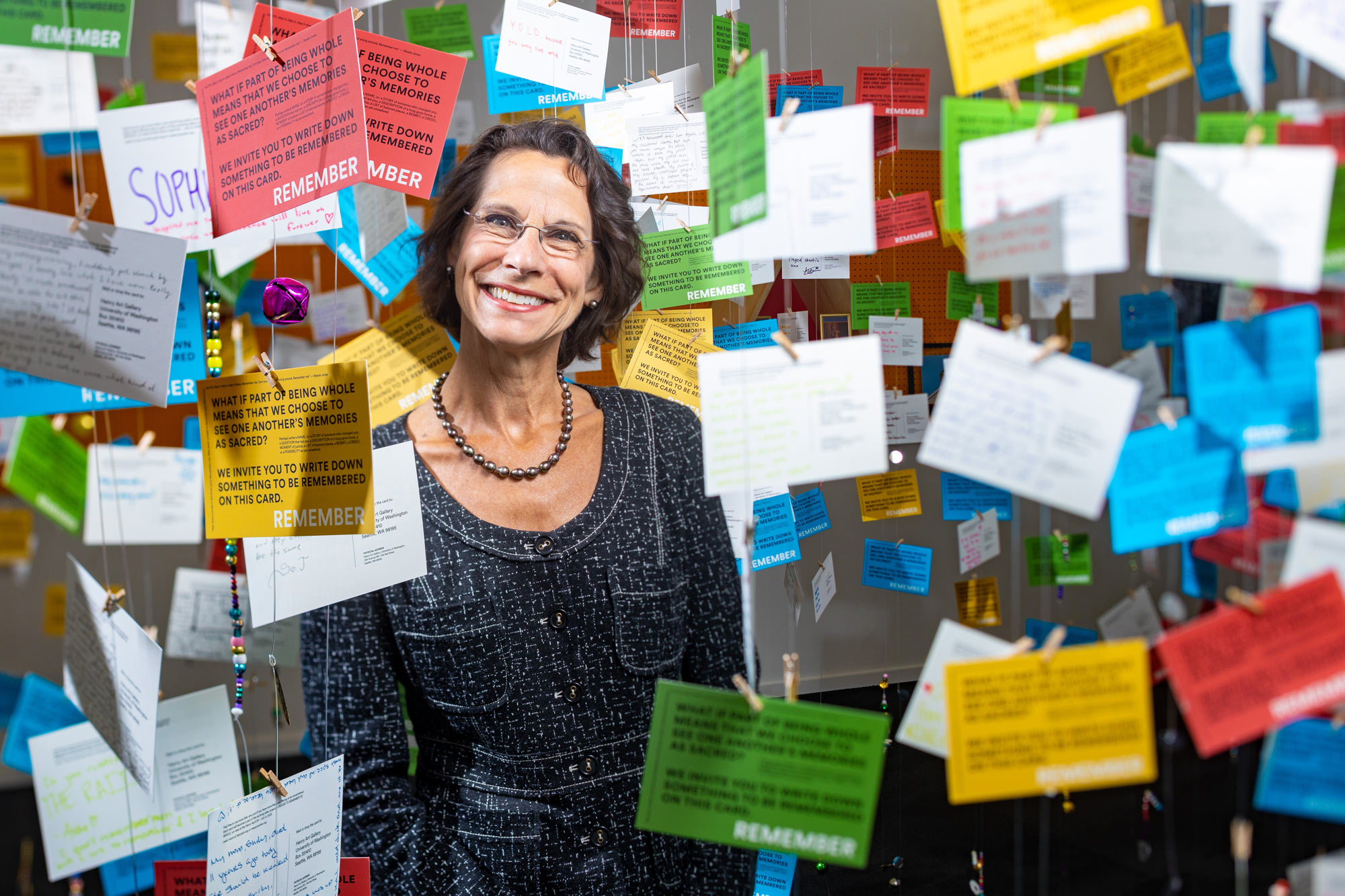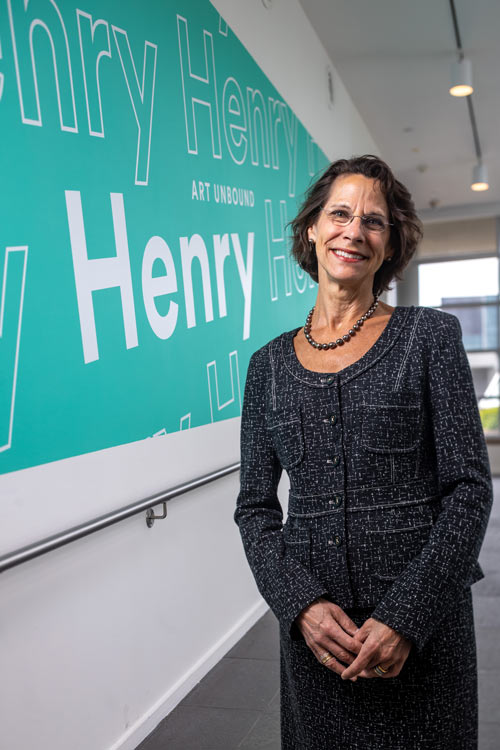
Museums are magical Museums are magical Museums are magical
Sylvia Wolf shares her parting thoughts after 15 years at the helm of the Henry Art Gallery
By Hannelore Sudermann | Photos by Matt Hagen | September 2023
If there’s anything to know about art museums, it’s that they’re good for us. They improve our sense of well-being, stimulate and inspire us and strengthen our communities. The research backs it up, says Sylvia Wolf, who recently retired after 15 years as director of the Henry Art Gallery. She wants us to know, value and love museums in all the ways she does.
Early this summer, as Wolf was packing up her office, the upper rooms of the Henry Art Gallery were filled with MFA students putting their final touches on their thesis exhibitions. Two stories below, an expansive display of the museum’s own curation and stewardship dominated the major exhibit space.
This is how Sylvia Wolf was leaving the museum after 15 years as its director. She retired in early July.

The Henry Art Gallery, a division of the College of Arts & Sciences, features contemporary art and ideas, says Wolf, who stepped down this summer.
“The role exceeded my expectations in every possible arena,” she says, looking back at the span of years bookended by an economic recession on one end and a pandemic at the other. Nonetheless, the museum grew and flourished during her tenure. The years were filled with joyful exhibit openings and an abundance of fresh, contemporary art.
Wolf also cites two successful fundraising campaigns, well over 160 exhibits and an evolution of the mission of highlighting contemporary art that is part of the Henry’s long-term legacy. Also, she notes, there was the care and curation of the collection of more than 28,000 objects.
And then there are the people. Deep into the building, down a narrow hallway, an office buzzes with activity. Curators, technicians, collections managers and conservators, and fundraisers occupy their hours with planning and supporting a coming year of events and exhibits. They help make the Henry the place where artists are excited to come, says Wolf, nodding to the “brilliant minds of our curatorial team.” They are so good at working with the artists and helping bring their visions to life. “We don’t say no unless it’s dangerous or against the law,” Wolf says. “If we’re outside our comfort zone, we are doing our job.”
In 2008, when Wolf took the position—officially known as John S. Behnke Director of the Henry Art Gallery—she joined Seattle’s vibrant art scene.
She was struck with how civic-minded Pacific Northwest philanthropy is. She watched the Olympic Sculpture Park rise on the shores of Puget Sound, “one of the most extraordinary achievements of this country or continent making art available for public use.” She also points to the Frye Art Museum, the Henry and the Seattle Art Museum as fulfilling the notion that civil society is advanced with having art and culture as part of the landscape. Yet with the population and the wealth in the region, there is untapped potential for further elevating the arts here. “We could be and placing Seattle as one of the best arts cities in the country,” Wolf says, “but we’re not there yet.”
One of the things Wolf has loved most about her time at the Henry is how collaborative it has been with individual artists, says Wolf. “We are putting ourselves at the service of their imaginations.” In 2022, for example, ektor garcia took part in the Henry’s fellowship program. garcia chose to build his exhibit in the two-story space known as the East Gallery and worked with students in the ceramics and metal sculpture studios to realize his vision. “It was wonderful,” says Wolf. “Students were working with the artist as artists in developing the work.”
“If we’re outside our comfort zone, we are doing our job.”
Sylvia Wolf
Another of the Henry’s special attributes is its history of engaging artists at different points in their careers. “We stick with them,” Wolf says. One of Wolf’s highlights was inviting Ann Hamilton to return to the Henry for a second show. The first was in 1992, when Hamilton was just gaining national acclaim as an installation artist. She came to the UW as a visiting fellow and developed an exhibit entitled “accountings” where she darkened the Henry’s walls with candle smoke and set loose 200 live canaries. In 2014, with Wolf’s support, Hamilton created another exploration of animal-human relationships, “the common S E N S E.” “It came out of a phone conversation,” Wolf says. “I said, ‘How would you like to come back and work with us again.’ And she said, ‘Let’s talk about it.’” They explored what it might look like if Hamilton returned to the museum with all-new work and had use of the whole facility, the whole campus, in fact. The artist used photos of specimens from Burke Museum, the School of Music faculty, the libraries and the Henry’s own costumes, textiles and photographs. It took close to three years to develop, but “It was worth the wait,” says Wolf, “It was exceptional.”
From the day it opened its doors in 1927, the Henry has had a reputation of being ahead of the times. And now that the times have us filling nearly every waking minute, we are less likely to devote an afternoon to our local museum, notes Wolf. One thing that sets the Henry apart is the variety and frequency of exhibits. It is so easy to just swing through and sample the latest display, especially for students, staff and faculty and regular campus visitors, she notes.
“Things here are changing all the time,” Wolf says. “If you only come once a year, you’ll miss a lot.”